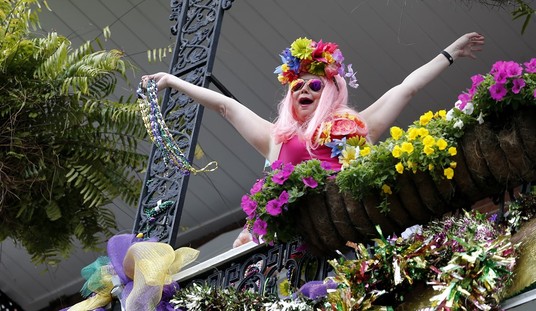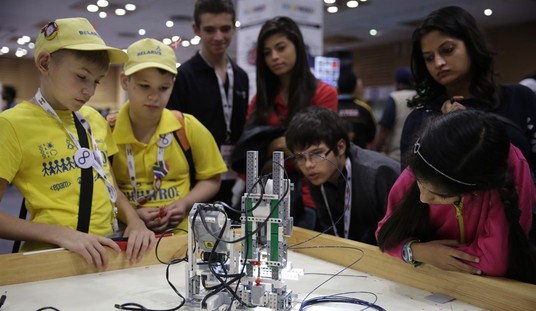Not done partying for St. Patrick’s Day? Worry not: It isn’t the only holiday taking place this week.
Rep. James P. Moran Jr., (D.-Va.), celebrated Persian New Year with a group of Tajik-Americans in Rayburn House Office Building the evening of March 21, but noted that the less well-known holiday might be overshadowed. “Unfortunately you’re coming here kind of at the same time as another tradition: The Irish-American celebration of St. Patrick’s Day,” he told the crowd.

“There are a few more Irish-Americans than there are Tajik-Americans,” he quipped. “I’m still Irish, but frankly I try to avoid it: too much drinking and too much, uh, celebrating.”
While the debauchery geared up around the city and Moran excused himself to, he said, drink some Guinness and try to keep his kelly-green tie clean, organizers from the Tajik American Cultural Association (TACA) hosted a showcase of their own native culture. The setting was almost surreal: performers in colorful garb harkened to ancient Central Asian culture with dances in the maschohi and kulobi styles against a backdrop of neo-Classical marble in the Rayburn foyer. Ustod Shavkatjon Badalov, a master of classical Tajik music, came on short notice from New York City to play the rubob, a traditional string instrument.
“This presentation is just a drop in the vast sea of our culture,” Anvar Samadzoda, public relations manager of TACA, said between performances.
“We created a platform where hopefully [Tajik and American] ideas and cultures and meet, intertwine and flourish,” Vladimir Fedorenko, president of TACA, said of his organization on Friday. “This reception is the embodiment of that idea.”
Modern-day Tajikistan was once part of the Persian Empire under the Samanid dynasty and, centuries later, the Soviet Union. It is peopled mostly by Persian-speaking Tajiks, cousins of the Iranians and the Afghans, who also celebrate Persian New Year. With borders on Afghanistan, Iran, and Russia, and a possibly large reserve of natural gas, Tajikistan would seem at least latently important to American interests.
But it’s not really, said Martha B. Olcott, senior associate with the Carnegie Endowment for International Peace’s Russia and Eurasia Program. The biggest topic in the U.S.-Tajik relationship, she said, is the Rogun Dam, which could help solve some of Afghanistan’s energy needs, but would also cut off much of Uzbekistan’s water supply.
The government of Tajikistan requested that the World Bank conduct studies last year on the pros and cons of the proposed dam, which would be the world’s tallest. Uzbekistan maintains that the dam, which is in under construction now, would engender a multitude of sins ranging from unfair political leverage for the Tajiks to a tsunami of biblical proportions should the region be hit by an earthquake, as is common in the seismically active area. The government of Tajikistan could use American support for the dam and, as such, swears that selling electricity to Afghanistan would help stabilize that country. But Russia and China, the two most likely investment partners, want little to do with a project that could irk the populous and well-defended Uzbekistan.
“It’s like the giant hot potato in Central Asia,” Olcott said. But, in the grand scheme of American interests abroad, it’s really a small fry.
But since it’s important to Tajikistan, it’s not surprising that the Tajik ambassador to the United States Nuriddin Shamsov on Friday night echoed Fedorenko’s wishes for closer relations between the U.S. and Tajikistan. On strategic concerns, even Moran told HOH during the reception that he considers the Central Asian country’s location and recent economic growth two factors that make it important to U.S. interests.
“We’re anxious for former Soviet satellite countries to gain their economic and political independence,” he said. “I think it’s fascinating to see what’s developing.”
Olcott downplayed the likelihood, though, that anything as heated as recent events in Ukraine could take place between Tajikistan and Russia. (Perhaps that’s for the better.)
So it’s hard to guess what the payoff of Friday night’s reception might be for U.S.-Tajik relations, but who could say no to a little springtime fun in Rayburn?
Persian New Year, or Nowruz, takes place on the vernal equinox — March 20 this year — and is celebrated with multiple holidays starting this week and ending early April. If you missed Friday night’s cultural edification, you’ve got another chance for Tajik immersion: TACA is hosting a concert with singer Jonibek Murodov Saturday, March 23.
[video, https://www.youtube.com/watch?v=bt1Ys4GZcYQ]
So don’t dam up your enthusiasm for this Central Asian serenade. Spring is in the air!








Join the conversation as a VIP Member